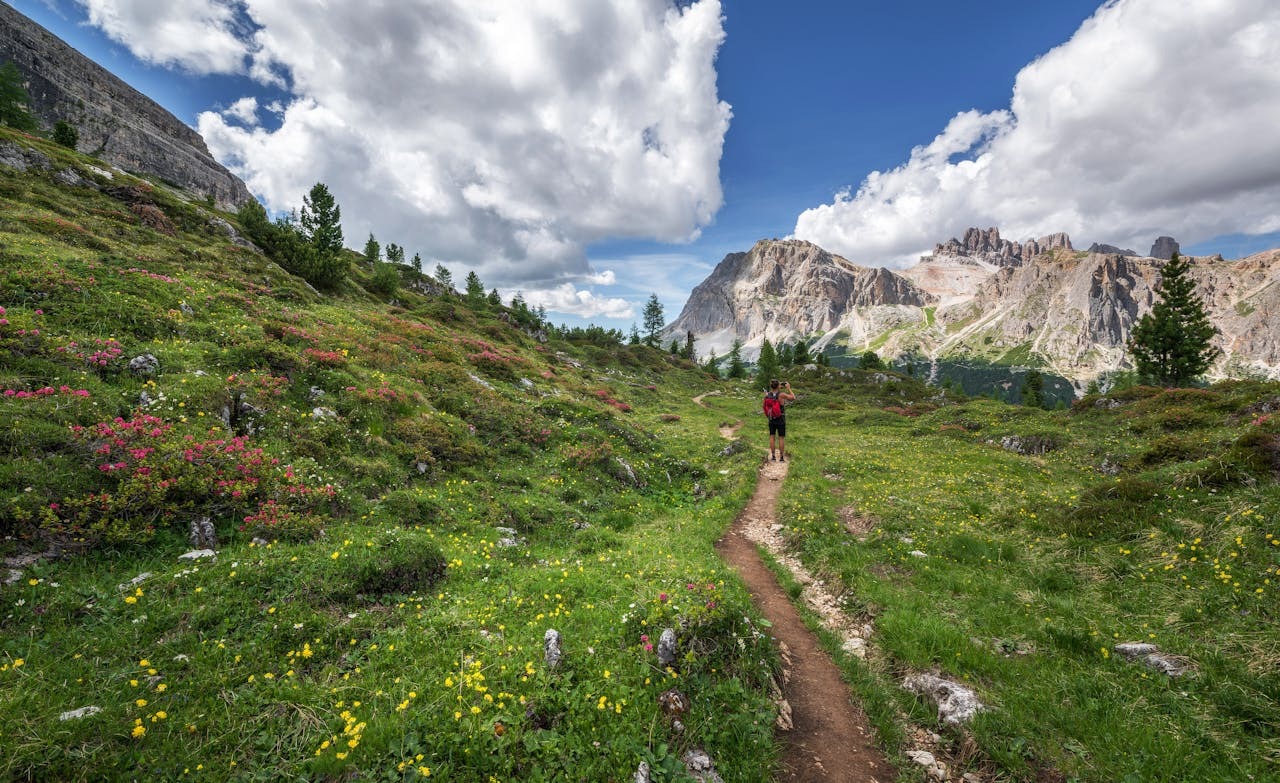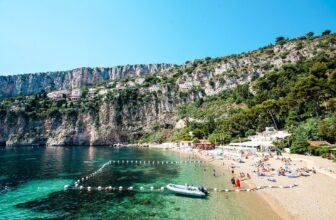
There’s a unique thing about hiking a path that has been walked for centuries by people from all over the world; some call it magic, some others call it a challenge, but the truth is that each of them has something for everyone.
The appeal of these trails lies in their remarkable duality; they are often labeled as both open-air museums and personal adventures. The experience is as much about the internal journey as the external one. A form of travel that prioritizes feeling and pace over ticking boxes. The best part is that you can find those trails in several countries across Europe, from the Camino de Santiago in Spain to Via Francigena in Italy. Here are some of the best:
Table of Contents
Preparing for Your Journey
Any successful holiday, whether it’s just to relax on the beach or to walk an ancient trail, has something in common: preparation. Planning will be your best friend if you plan to tackle any of those ancient routes, and the first thing to do is choose a route that aligns with your ambitions and fitness; perhaps a shorter segment for a first attempt or the full thing if you want a challenge. Then planning the logistics is a must too, since for most of them you will be walking for days and staying in a different town each night.
I know that the logistical challenge of planning a long-distance walk can feel overwhelming, especially if it’s your first time. That’s why this is where an agency specialized in walking holidays like Orbis Ways proves its value. Their team is composed of professional hikers and knows exactly what you need for those long-distance ancient trails. They excel at getting all the logistics done for you by handling all the details like accommodation bookings, daily luggage transfers, and giving you comprehensive route notes and support. This allows you to fully enjoy the experience, knowing that your next bed and backpack are secured.
They offer packages and services for many countries and many popular hikes like Camino de Santiago or Fisherman’s Trail, but when it comes to pilgrimages, those are some of the best:
The Camino de Santiago in Spain
The Camino de Santiago, or the Way of St. James, is by far one of the most popular and famous long-distance hikes in the whole world. It is the quintessential European pilgrimage. It’s not a single route, but a network of trails that converge on the cathedral in Santiago de Compostela. The most famous route is the Camino Francés, which stretches nearly 800 kilometers from the Pyrenees across Spain’s northern side. On this trail, you will be able to spot vineyards of La Rioja, the high plains of Castile, and the green hills of Galicia.
The Camino’s true spirit, however, is found in its unique social setting. Often on the trail, you will hear people talking about “the camino family”; this trail offers a unique shared purpose that fosters instant connections among walkers from across the globe. It creates a moving community where stories and encouragement are exchanged as freely as the path’s traditional greeting: “Buen Camino.”
The Via Francigena in Italy
For those drawn to Italy’s blend of history and beauty, the Via Francigena is your best option. This historic trail, documented by Archbishop Sigeric in 990 AD, goes from Canterbury in England to the heart of Rome. Its most celebrated sections take you across the Italian countryside, particularly through Tuscany.
This trail will let you spot cypress-lined lanes, past medieval towns like San Gimignano, and farmhouses, as well as restaurants where you can try local wine and cheese. It’s usually a lot less traveled than the Camino and offers a more solitary and intimate experience.
St. Olav’s Ways in Norway
The St. Olav’s Ways offer a pilgrimage completely different; it has a whole different character since its roots are in the saga of the Viking king who brought Christianity to Norway. The primary route leads to Nidaros Cathedral in Trondheim, where you will be able to check out boreal forests, deep fjords, and expansive mountain plateaus.
Also, you will notice that the Nordic concept of friluftsliv (a love of open-air life) dominates the experience, making it a lot more suitable for those who look for a deeper nature connection. The walk is more rugged and remote; it also demands more reliance, but the rewards make it worth it.
The Pilgrim’s Way in England
If you prefer a shorter walk, then you must try the Pilgrim’s Way in England. This path takes you from Winchester to Canterbury, through the lovely Surrey Hills and Kent Downs. It’s rich with history and passes through ancient churches, medieval inns, and green landscapes.
Most travelers say that the views from Blatchford Down are particularly stunning. It’s a perfect choice for those who want to try a pilgrimage without committing to a month-long journey.
If you like the weather around here, then you should know that the UK is home to several other pilgrimages, a good example is The West Highland Way in Scotland, which is highly popular and loved among travelers. Not only that, there’s also Paulinus Way to the north of England and St. Peter’s Way to the east of England.
Other Pilgrimages in Europe
Beyond those well-known trails, there are a ton of other pilgrimages in Europe for you to try. Fortunately, the continent offers a network of pilgrimages that are deeply rooted in faith and history. A good example is the journey to Lourdes in France, where the Blessed Virgin Mary appeared to St. Bernadette in 1858. Similarly, Fatima in Portugal draws pilgrims to the Sanctuary of Our Lady of Fatima, site of the 1917 Marian apparitions. In Poland, the Jasna Góra Monastery in Częstochowa houses the iconic Black Madonna icon, a symbol of national faith and devotion, while Kraków’s Divine Mercy Sanctuary honors St. Faustina’s visions.
For those who are looking for a mix of history and spirituality, Rocamadour in France (a cliffside monastic city since the 12th century) and Assisi in Italy (the birthplace of St. Francis), offer amazing experiences.
What to Expect on Your Pilgrimage

Source: forbes.com
So, what’s it really like to walk one of these ancient routes? Well, no two days are the same! You’ll typically walk between 15-25 kilometers a day, but this will depend on the route you choose and your fitness level, as well as the pace you decide. You’ll stay in a mix of places, from pilgrim hostels called albergues to guesthouses or hotels and inns. You’ll eat well too, most of the time you will be able to try local meals, or have picnic lunches from grocery stores, and maybe even some Paella in Spain!
Don’t worry about carrying your heavy bag; many services can transfer your luggage between stops, but you should always take a backpack with you. The main thing you need to consider or keep in mind is the weather; you always need to be prepared for all kinds of weather. Other things to be prepared for are the steep trails, hilly paths, and the occasional wrong turn (it will happen, don’t panic!). But that’s all part of the adventure! Remember, it’s not a race. Take your time, talk to fellow pilgrims, and enjoy every step.
Conclusion
An ancient pilgrimage is an invitation to experience Europe at its most authentic and profound. These trails offer a unique view in a vast historical way, as well as a unique blend of physical challenge, cultural immersion, and personal reflection. Whether you go for the Camino, the Via Francigena, or the St. Olav’s Ways, you are sure to step into a story much larger than yourself.







